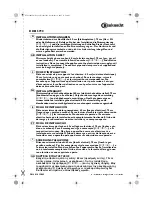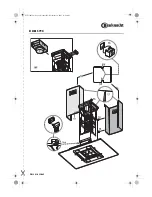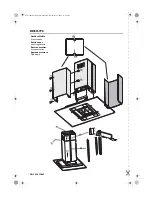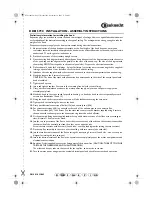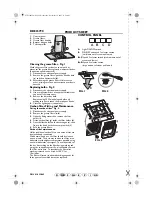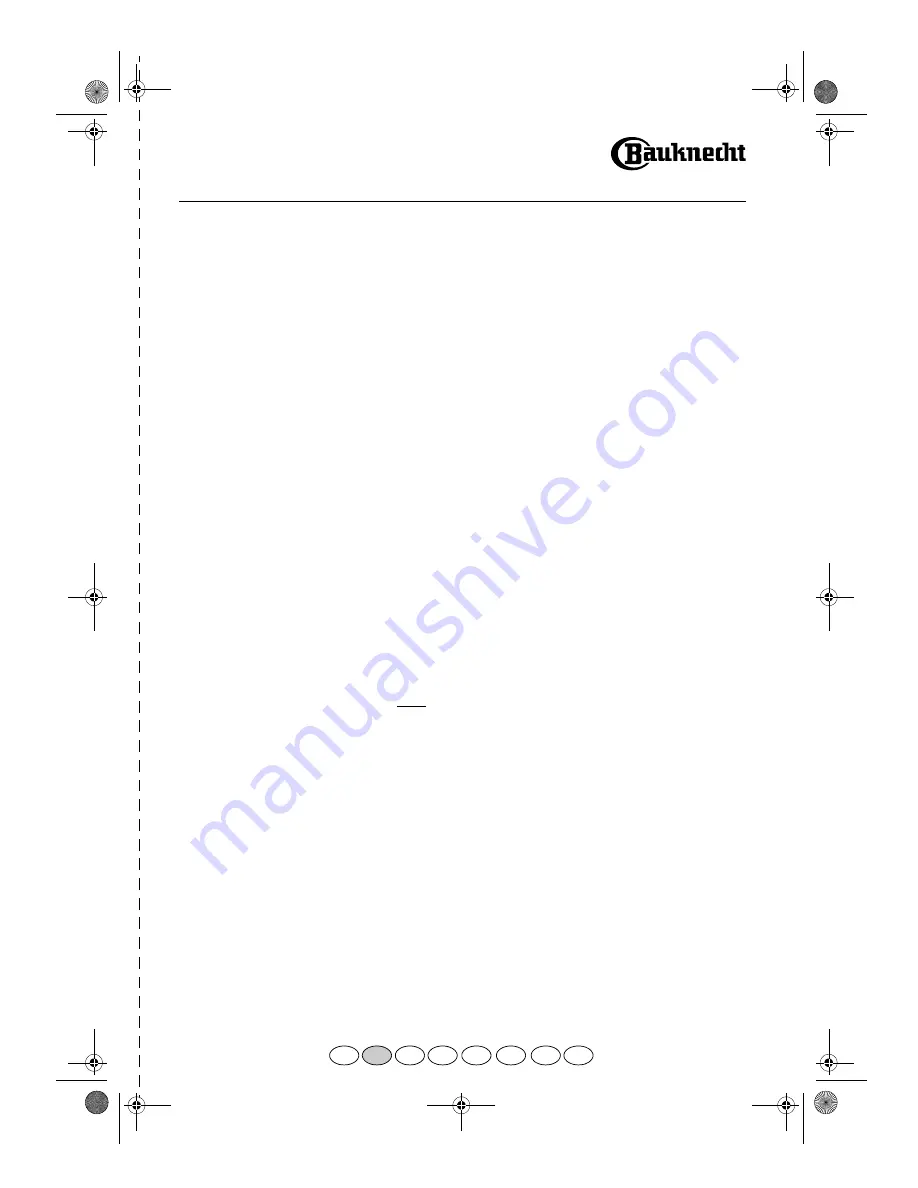
5019 418 33043
DDEI 5790
Preliminary information for installing the hood:
Expansion plugs are provided to secure the hood to most types of ceilings. However, a qualified technician must
verify suitability of the materials according to the type of ceiling. The ceiling must be strong enough to take the
weight of the hood.
Disconnect the power supply at the home main switch during electrical connections.
1. Adjust extension of the hood support structure, as the final height of the hood depends on this, and
remember that with installation completed the hood must be at least 60 cm above the cook-top for electric
cookers and 75 cm for gas or mixed cookers.
2. Fix the two sections of the structure using 8 screws.
3. Place the ceiling hole diagram directly above the cook-top (the centre of the diagram must match the centre
of the cook-top and the edges must be parallel to the sides of the cook-top - the side of the diagram with
the wording FRONT corresponds to the control panel side). Prepare the electrical connection.
4. Drill as shown (6 holes for 6 wall plugs - 4 plugs for fixture), screw the outer screws using the key supplied)
leaving a space of about 1 cm. between the screw head and the ceiling.
5. Introduce the tube supplied, inside the truss and connect it to the motor compartment connection ring.
6. Hook the truss to the 4 screws (see step 4).
CAUTION! The side of the truss with connection box corresponds to the side of the control panel with
hood assembled.
7. Tighten the 4 screws.
8. Insert and tighten another 2 screws in the remaining free holes for secure fixing.
9. Carry out the electrical connection to the mains power supply, only turn on the power supply with
assembly completed.
10. Hook the hood to the truss, check for perfect hooking - to hook the hood to the truss partially screw 4
screws (see illustrations 10 and 12).
11. Fixing the hood to the truss with two screws, will also facilitate centering the two parts.
12. Tighten the 4 screws fixing the truss to the hood.
13. Carry out electrical connection of bulbs (13a) and control panel (13b).
14. For extractor versions (14A), connect the other end of the exhaust pipe to the domestic flue.
For filter versions (14F), fit deflector F to the truss and secure it to the bracket supplied using 4 screws,
then connect the exhaust pipe to the connection ring located on the deflector.
15. Fit the nuts with fixing hooks supplied inside the top and bottom sections of the flues at the rectangular
slots. A total of 10 nuts must be fitted.
16. Join the two top sections of the flue to cover the truss so that one of the slots on the sections is situated on
the same side of the control panel and the other on the opposite side.
Screw the two sections with 4 screws (2 each side - see the plan diagram for joining the two sections).
17. Fix the top flue assembly to the truss, near the ceiling, with two screws (one each side).
18. Join the two bottom sections of the flue covering the truss using 6 screws (3 each side - also see the plan
diagram for joining the two sections).
19. Insert the bottom section of the flue in the special seat to completely cover the motor compartment and
electrical connection box.
20. Apply the 2 tabs (supplied) to cover the fixing points of the bottom flue (CAUTION! THE BOTTOM FLUE
TABS ARE THE NARROWER AND SHALLOWER ONES).
The wider and deeper tabs are those used for the top flue, and must be cut to size.
21. Turn the mains power on again at the central electrical panel and check for correct hood operation.
INSTALLATION - ASSEMBLY INSTRUCTIONS
I
F
NL
E
P
GB
D
GR
41833043.fm Page 7 Wednesday, November 19, 2003 11:26 AM

